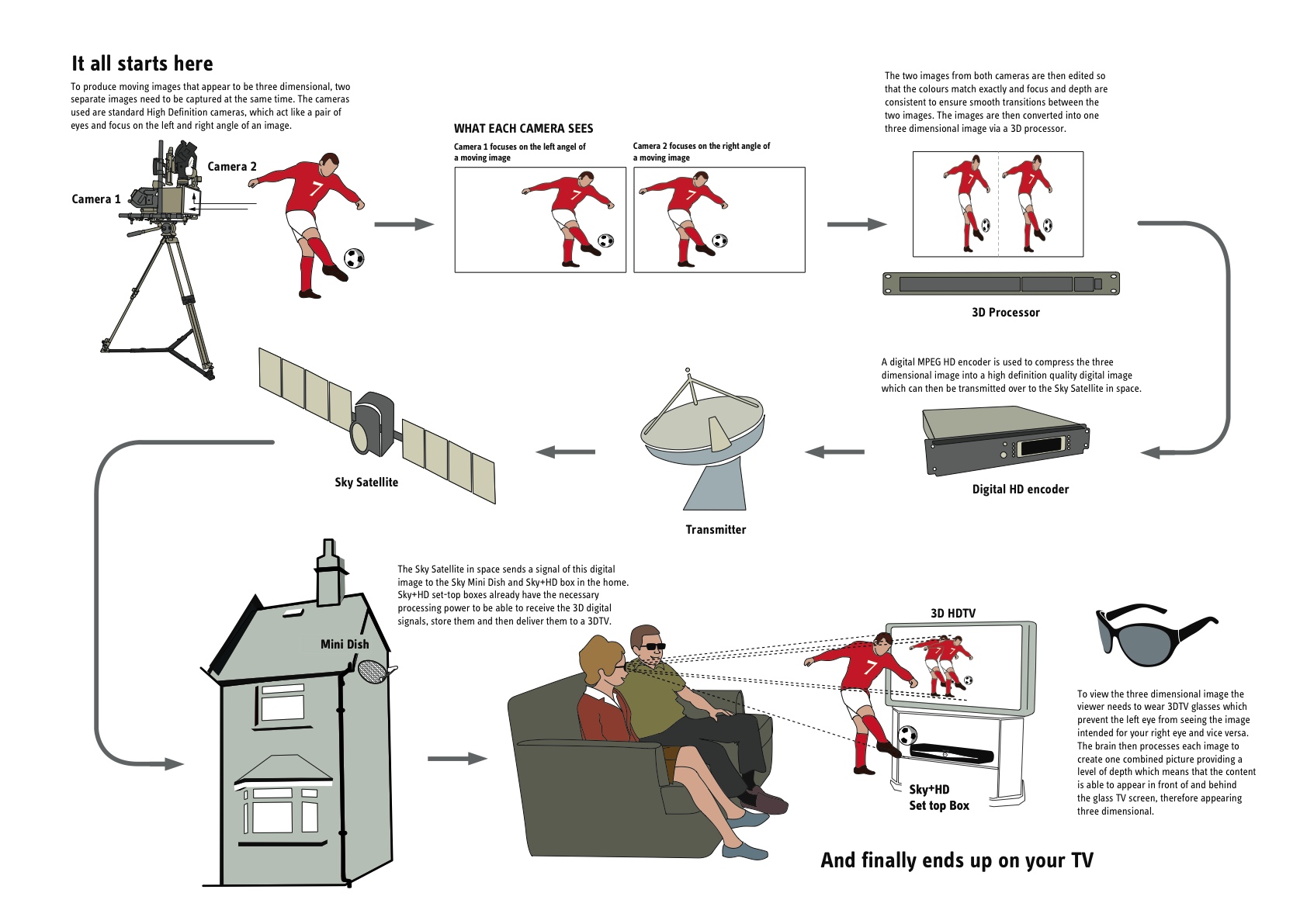Akash Bohare & Rishika Gaud
Second Year
Chemical
How 3D works..
The first of the 3d movies made its debut in 1922 using the oldest form of technology - anaglyph images - to produce stereoscopy. To understand this we need to consider how the eyes work to see in real life. Assuming no vision issues, our eyes are spaced a number of centimeters apart, so when looking at any object the eye send information to brain from two slightly different perpectives. The brain interprets this information and combines the two images to create depth perception and see one 3 dimensional image.
Stereoscopy originally involved taking a single image, and adding two additional image layers with slightly different perspectives. One layer was tinted red and the other blue. When watching a 3D movie, the audience would wear cardboard 3D glasses that had one red and one blue lens. Each lens would filter out its similarly colored image layer, thereby tricking the brain into creating a 3D image by mashing the two images together.
Stereoscopy
Stereoscopy is most widely accepted method for capturing and delivering 3D video. It involves capturing stereo pairs in a two-view setup, with cameras mounted side by side, separated by the same distance as between a person's pupils.
If we imagine projecting an object point in a scene along the line-of-sight (for each eye, in turn) to a flat background screen, we may describe the location of this point mathematically using simple algebra. In rectangular coordinates with the screen lying in the Y-Z plane (the Z axis upward and the Y axis to the right) and the viewer centered along the X axis, we find that the screen coordinates are simply the sum of two terms, one accounting for perspective and the other for binocular shift. Perspective modifies the Z and Y coordinates of the object point by a factor of D/(D-x), while binocular shift contributes an additional term (to the Y coordinate only) of s*x/(2*(D-x)), where D is the distance from the selected system origin to the viewer (right between the eyes), s is the eye separation (about 7 centimeters), and x is the true x coordinate of the object point. The binocular shift is positive for the left-eye-view and negative for the right-eye-view.
For very distant object points, it is obvious that the eyes will be looking along the same line of sight. For very near objects, the eyes may become excessively "cross-eyed". However, for scenes in the greater portion of the field of view, a realistic image is readily achieved by superposition of the left and right images (using the polarization method or synchronized shutter-lens method) provided the viewer isn't too near the screen and the left and right images are correctly positioned on the screen. Digital technology has largely eliminated inaccurate superposition that was a common problem during the era of traditional stereoscopic films.
Technologies..
There was another problem with these colorful anaglyph images, though. They altered the coloring of the movies and interpreting the different images would often cause headaches after a short time. This led to the creation of the polarized 3d glasses we see in cinemas today.but the 3d technology used in movies is different than what is used in homes.
To overcome the above problem, the newest glasses innovation is a LCD shutter glasses which work on a system known as 'active technology'. These active shutter glasses work by alternately blocking the vision in each eye in conjunction with the refresh rate of the display screen. 3D TVs that use this form will display alternate images with slightly differing perspectives at a high rate, and the glasses darken each lens in time with the alternating images, causing the brain to do the classic image mash-up.
This technology works in a similar fashion as the older glasses, by blocking what image enters which eye. Shutter glasses simply take the idea to the next logical step by literally blacking out the lenses at a high rate of speed. Subsequently, shutter glasses are able to offer a much clearer three-dimensional picture than older methods














good one !!
gud one ..........keep it up !!!
looks like you have both worked hard a lot together.keep it up.
ha ddepanshu bhai bahut mehnat karni padi thi.....
sunny sir nd vivek sir-thanks...:)))
bht acha article hai.Pics toh bht hi jyada achi dhundhi hai tum dono ne.
great!!!
great job guys keep it up
nice one bro keep it up
good 1 guys lage raho
nyc work... :)
n1..!! ;)
impressive work Akash and Rishika.....keep it up!
nice work akash bhai
u too rishika..
guyz ur hardwrk paid off.......congo....!!
nyc wrk fnds..
thnx ol..:))
good work guys....!!
thanks ol.....